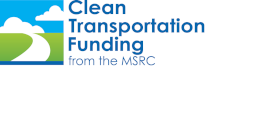Metallic Power was funded by the MSRC as an element of the FY 1995-1996 Work Program under the Research and Development Category. The project's goal was to develop a metal-air battery fuel cell, and demonstrate the fuel cell in a light duty electric vehicle that could be driven 300 miles per charge and recharged in 10 minutes or less. It was originally conceived that the metal-air battery would utilize aluminum; however, this was changed to zinc during the intial contract task. The metal-air battey operates by accelerating, in a controlled environment, metal oxidation. When metal oxidizes, an electric current is generated within the metal. In the case of Metallic Power's metal-air battery, tiny zinc pellets suspended in an electrolyte solution are rapidly oxidized. This process has, as its end products, zinc oxide, and electric current. The zinc oxide is in the form of a white powder tha precipitates out of the electrolyte solution. The production of an electric current is the desired end product; this electricity is used as the primary power source for the electric vehicle. Metallic power successfully integrated their zinc-air battery system into a Solectria Force electric vehicle and drove the vehicle for approximately 120 miles in Southern California.
906680.00
Given that this is a research, development, and demonstration effort, emission reductions attributable to this project will be realized once the technology is fully commercialized and used in a next generation electric vehicle. It is important to note, however, that Metallic Power is also applying zinc-air fuel cell technology to stationary sources; thus, the potential environmental benefits of this technology go well beyond mobile sources.
The Final Report includes the following: Demonstration Trip Maps and Mileage Logs; Problems Encountered; Lessons Learned; Market Analysis; Drive Procedures; Dynamometer Test Data; Solectria Force Specifications; EV Parts List; EV Cooling System Test Results; EV Controller Specification; and EV Mechanical Design.
MSRC, South Coast AQMD, California Energy Commission, Toro, Briggs and Stratton, the U.S. Army, U.S. Department of Transportation, and Textron.
